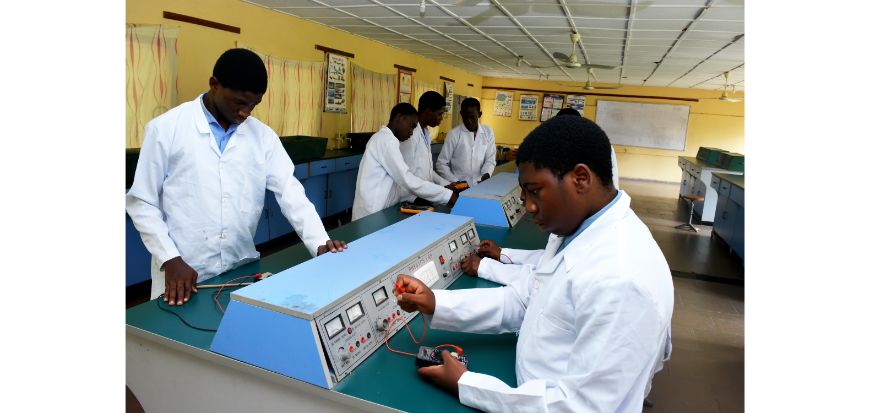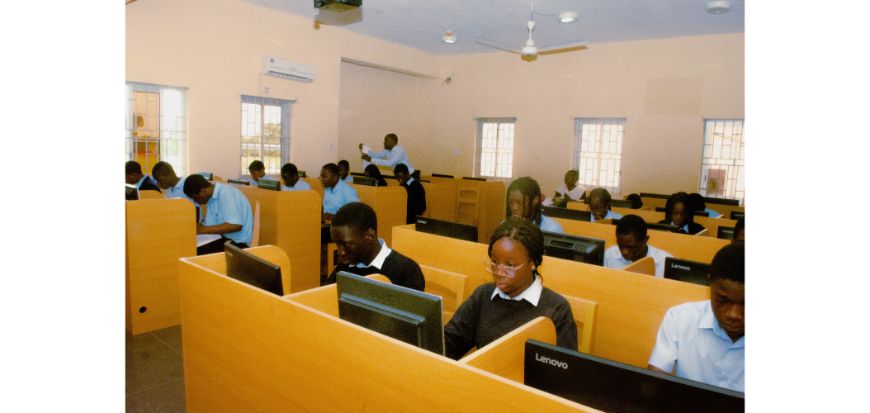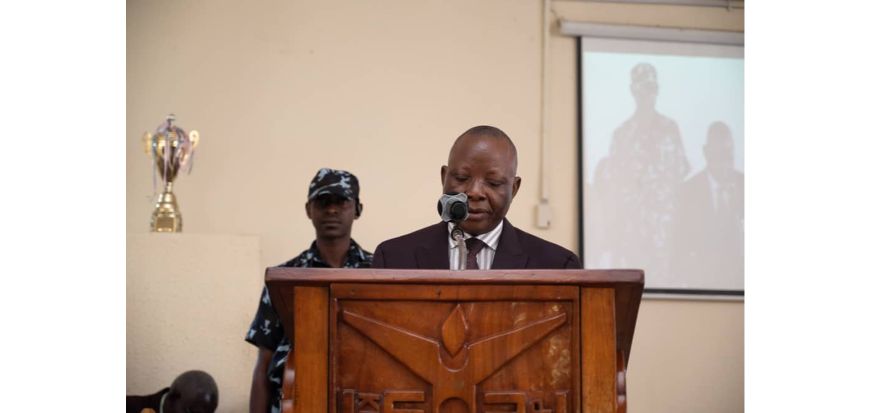
Department of Physics
The department imparts the physical basics of Engineering Science to science students by means of meaningful experimental set-ups that provide valid quantitative measurement results.
The focus is on Kinematics, dynamics, vibration theory, fluid mechanics, thermodynamics, acoustics and optics.
The department also gives the practice of taking measurements, analyzing data and drawing inferences while the students experiment.
The department has quite spacious, very well ventilated to ensure proper availability of light in it and well equipped with a modern apparatus laboratory.
In the school laboratory, students learn to design, perform, document and evaluate physical experiments, while doing so, teachers reinforce the topics’ concepts taught in the class.
The major safety rules in the Physics laboratory are:
- Food and drink are not permitted during class in the laboratory at any time
- Students do not come into the laboratory early unless the instructors or teachers are present
- Students do not wear loose hair or clothing around moving equipment
- Equipment is not set too close to the edge of the table.
Simple Physics Experiments
CAN EGGS FLOAT IN WATER?
Principles
- Fill glasses with water and 6 (six) tablespoons of salt into one of the glasses of water and mix it well.
- Drop an uncooked egg in each of the glasses.
- Notice that the egg will float in the saltwater but sinks in the ordinary tap water.
- This is because salt water is dense than regular water.
Application
This same principle applies to people swimming in oceans or saltwater lakes. The average person would sink in ordinary water but can float like a boat in saltwater.
The Dead Sea is 33% salt by mass. People find it very odd how floaty they are when they swim in the Dead Sea ( by the way, the high salt content makes it hard for living things to survive in the Dead Sea water and hence the name “Dead” Sea).
FIRE UNDER WATER
Warm the base of a candle stump and stick it in a bowl. Fill the bowl with cold water up to the rim of the candle. If you light the wick, it burns until it is under the surface of the water.
Then the candle flame hollows out a deep funnel. An extremely thin wail of wax remains standing around the flame and stops the water from dousing it. The water takes so much heat from the candle that its outer layer does not reach its melting point, and the wax there cannot also evaporate and burn.
Okay then, come to TAICO and both see and taste for yourself.









